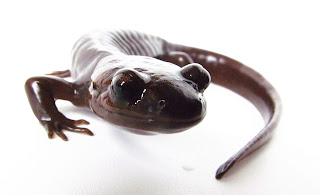I am helping carry out two large scale experiments in the lab this summer, a huge collaborative project between us and a companion lab in Pittsburgh (the Relyea group). It's turned out to be a valuable crash course in conducting (and designing) large scale lab experiments! I've done my fair share of lab work in the past but the logistics of running these two projects have been eye opening for me. There are frog shipments every week, multiple species, several treatment combinations, 2x a week feedings, individual housing units to wash and prepare, etc, etc. Our group is a well-oiled machine by now and come each Friday (measurement day for new animals!) everyone knows their posts and duties and can run through hundreds and hundreds of individuals with scarcely a break til noon! It's a mad assembly line but everything runs smoothly and somehow, we all get it done...I remember the first Friday we started at 8 am and when I finally got home my clock read 8:30 pm!
Anyways, we are deep in summer and though this year will not see me mucking about outside too much, I will nevertheless attempt to fill this space with awesome pictures of frogs among other animals that usually fill up this space.
First off, I staged an impromptu photo shoot with my office pet, Phaeton. He is all grown up as you can see:
 |
| Did you know amphibians have the largest vertebrate genomes? Humans have over 3 billion base pairs, a mouse ~ 2.7 billion, the bacterium E. coli over 4 million. But if you think we are impressive take a look at salamanders! Phaeton is a northwestern salamander, Ambystoma gracile, and has over 41 billion base pairs! Even more impressive is the Japanese plant, Paris japonica, with 149 billion base pairs! Yowza! As you may have guessed, having a large genome does not necessarily make one more complex... It does however make for bigger cells. I'll try and remember to discuss this later because it's really a fascinating aspect of amphibian biology I am just starting to learn about myself! |
 |


Luv your stuff....great learning curve for me.....thank you.
ReplyDelete